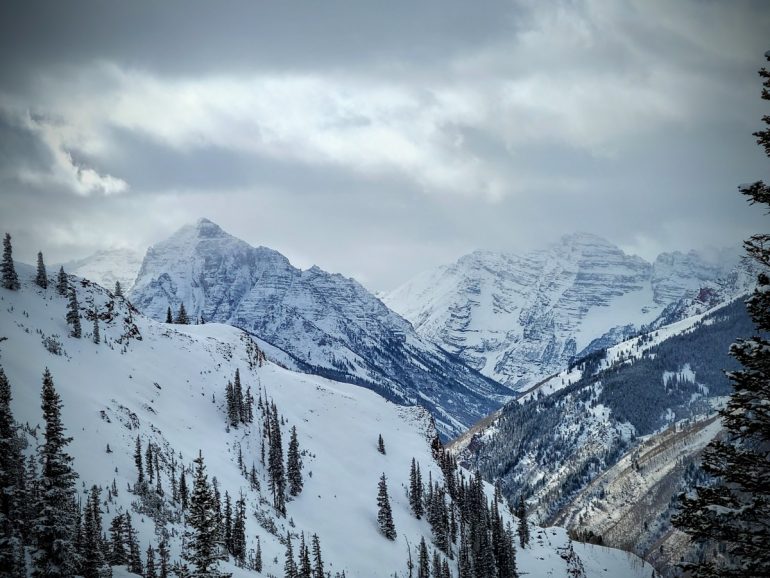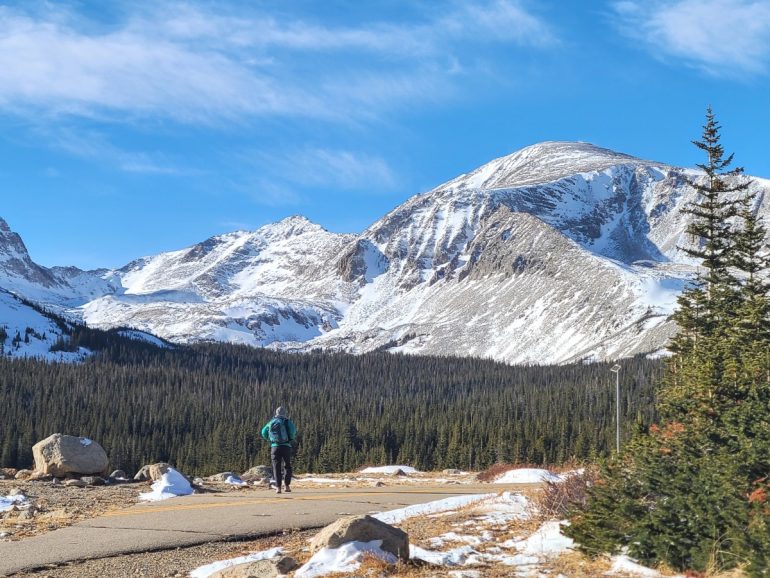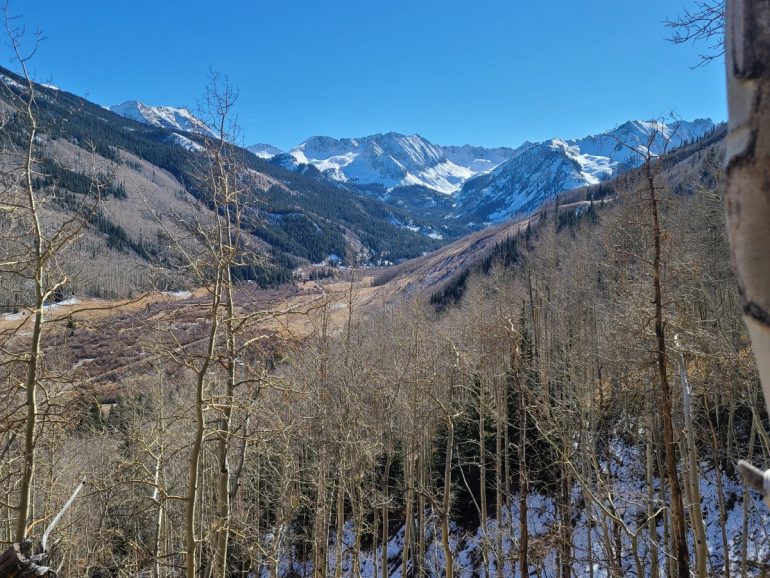The Colorado mountains are currently getting pounded by snow. The information in this article reflects information pre-storm.
Let’s set the scene. It’s early December in Colorado. Long after that mid-October snowfall (that deep down, you knew not to get too excited about), your rock skis are still your daily driver, and mountain biking is better than skiing. To top it off, the world is in the middle of a global pandemic as persistent as the inevitable weak layer. Is it 2020 again, or just deja vu?
As if global health and economic challenges weren’t enough, 2020/21 saw the deadliest winter on record for avalanche fatalities, with 37 deaths across the United States and 12 in Colorado alone.
“The deadly season we had last year was directly tied to the snowpack structure, conditions you see coming around once in a decade,” says Brian Lazar, the deputy director of the Colorado Avalanche Information Center (CAIC). “The two COVID winters we’ve had offer a good comparison. COVID became a real big deal in the spring [of 2020], and there were a ton of people in the backcountry, but Mother Nature largely cooperated and we did not see this big surge in avalanche fatalities.”
Even in an average year, Colorado’s snowpack harbors persistent weak layers (PWLs) caused by early season snowfall. PWLs form when shallow snowpacks are exposed to long periods of cold temperatures without additional snowfall. These conditions cause faceting of the snowpack, a transformation of snow crystals into cohesionless grains. Once buried, these weak layers remain, causing avalanche problems for months.
In 2020, Colorado received significant snowfall at the end of October, followed by a prolonged two-week dry spell. In November, moderate snowfall was again followed by another long 2-3 week dry spell after Thanksgiving, leading to below average snowpacks throughout the state, especially west of the Continental Divide.
If you think back through the patterns we’ve experienced this winter so far, the timing feels eerily similar. However, Zach Guy, head forecaster for the Crested Butte Avalanche Center, sees some important differences.
“Last year, three patterns came together to make it especially problematic,” says Guy. “One was that we had continuous snow coverage across all elevations when that weak layer formed. The second was how long the dry spell was [before the early season snow got buried]. The last thing was that particular dry spell came after we had had a storm of really low-density snow without much wind and a really low-density snowpack that facets exceptionally weak. You can kind of contrast it with this year where right now, we have one of those ingredients; a really long dry spell.”
This winter, the dry spells have been warmer, causing many southerly aspects and low-elevation slopes to melt out and northern aspects to facet less aggressively. Even on north-facing alpine slopes, the snowpack is in better shape. “The weak layers themselves are not as continuous across the terrain,” notes CAIC’s Lazar. “So it’s a better foundation than it was last year, although it’s not great.”
An additional difference between last winter and what we’re seeing so far this year is how the snowpack is developing across the United States. “Another defining characteristic of last year was that those [tricky] conditions extended over a large portion of the Western US.” An active northerly storm track earlier in the season, and wet and warm conditions across the northwest set up mountainous regions throughout the West differently this season.
While, we may not be destined to live through the same “once in a decade” avalanche hazards experienced last winter, the prolonged high-pressure system isn’t doing the West, and Colorado, in particular, any favors. According to NOAA’s drought monitor, Colorado is still dealing with moderate to extreme drought. Statewide, Colorado is at 54% average snowpack as of December 2, with more snow in the northern mountains and less in the south.
This gradient in the statwide snowpack, from 70% median snowpack in the Laramie/N. Platte watershed in the north to 30% in the southern mountains, could lead to more widespread weak layers in the northern mountains. However, both Lazar and Guy say there are too many factors at play to predict how our current snowpack will impact stability throughout the season. “We’re paying attention to the distribution of the layers, and then we’ll be watching their behavior once they get buried,” explains Guy. “And that’s as telling as you can get. The rest is just seeing how the storms play out.”
With the uncertainty of how our snowpack will develop moving forward, Lazar and Guy stress the importance of reading the avalanche forecasts daily, even on days you’re not skiing.
You can access these forecasts at www.cbavalanchecenter.org for the Crested Butte region and https://www.avalanche.state.co.us/ for anywhere in the state daily.
Diving into the daily forecast discussions and following how the snowpack develops at different elevations and aspects in your area is a valuable way to prepare for when the snow inevitably starts to fall.
Even though we’re all anxious for winter to kick into full swing and to put away our rock skis – and the storm currently hitting the state will go a long way to helping restore our snowpack- Colorado will experience an early season snowpack well into December at the very least. Guy stresses caution as the snowpack continues to develop, “you may only have a one in 100,000 odds of dying in an avalanche on a certain slope. But if you do that 50 days a year for 40 years, your odds quickly change. The more you do something, the more you accept greater risk, so you’ve just really got to play conservatively if you’re in it for the long haul, which I think we all are.”
*Note: Both Lazar and Guy were reached on November 22 & November 19 respectively. The storm currently hitting the state is sure to make significant changes to our snowpack and give us a sense of how it may set up for the rest of the winter.
Nathan Boyer-Rechlin lives in Carbondale, Colorado, and is the Events Coordinator for Cripple Creek Backcountry.
Nathan Boyer-Rechlin lives in Carbondale, Colorado and is the Events Coordinator for Cripple Creek Backcountry.



